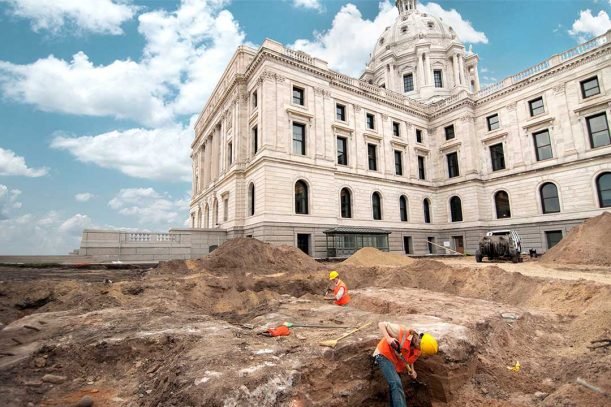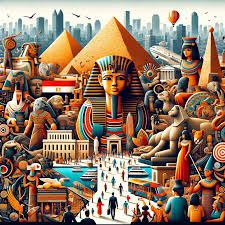Cultural Resource Management (CRM) is a vital practice that ensures the preservation, protection, and sustainable management of cultural heritage. Whether it’s historical buildings, archaeological sites, or artifacts, CRM plays a critical role in safeguarding the tangible and intangible aspects of human history. This interdisciplinary field combines history, archaeology, architecture, and environmental studies to manage cultural resources responsibly, balancing preservation with development and modern needs.
In this blog post, we will explore the importance of Cultural Resource Management, its key components, and the role it plays in preserving cultural heritage for future generations.
What is Cultural Resource Management?
Cultural Resource Management refers to the process of identifying, evaluating, and managing cultural resources, which can include historical landmarks, archaeological sites, buildings, landscapes, and even traditional knowledge systems. The goal of CRM is to protect and preserve these resources while allowing for necessary development, ensuring that they are not lost or destroyed.
The practice of CRM often comes into play when there is new construction, such as roads, buildings, or infrastructure projects, in areas that may have cultural or historical significance. CRM professionals work to mitigate the impact of these developments on cultural resources, often through archaeological excavations, historical documentation, or relocation efforts.
Key Components of Cultural Resource Management
There are several essential components that make up Cultural Resource Management. These components work together to ensure that cultural resources are preserved and managed appropriately:
-
Survey and Inventory:
The first step in CRM is conducting surveys to identify cultural resources in a particular area. This can include archaeological surveys, historical research, and architectural assessments. The goal is to catalog all resources that may need protection or preservation.
-
Evaluation:
After identification, the next step is evaluating the significance of the cultural resources. CRM professionals determine whether the resources are eligible for protection under laws like the National Historic Preservation Act (NHPA) or other relevant regulations. This evaluation includes assessing the historical, architectural, or archaeological value of the resources.
-
Mitigation:
When cultural resources are threatened by development or other activities, mitigation strategies are implemented. This can involve preserving the resource in place, relocating it, or documenting it through photographs, drawings, and written reports. Mitigation ensures that, even if the resource cannot be saved, its significance is recorded.
-
Preservation Planning:
CRM professionals also create long-term preservation plans for cultural resources. This involves working with local governments, developers, and communities to establish guidelines for protecting resources over time. These plans may include ongoing maintenance, public access, or educational programs.
-
Compliance with Legal and Ethical Standards:
CRM is often guided by legal frameworks that protect cultural resources. In the United States, laws like the NHPA and the Archaeological Resources Protection Act (ARPA) set guidelines for how cultural resources must be handled. CRM professionals ensure that projects comply with these laws and respect the cultural significance of the resources.
The Importance of Cultural Resource Management
Cultural Resource Management is essential for several reasons:
-
Preserving History and Heritage:
One of the primary goals of CRM is to preserve historical and cultural heritage for future generations. Whether it’s an ancient archaeological site or a historic building, these resources provide valuable insights into our past. Without CRM, many of these resources could be lost to development or neglect.
-
Balancing Development and Preservation:
CRM helps balance the need for modern development with the importance of preserving cultural heritage. By identifying and mitigating the impact of development on cultural resources, CRM ensures that progress does not come at the cost of our shared history.
-
Education and Public Awareness:
CRM efforts often lead to greater public awareness and appreciation for cultural heritage. Through preservation projects, archaeological excavations, and historical research, communities can learn more about the history and culture of their region, fostering a sense of pride and responsibility for maintaining these resources.
-
Cultural Sensitivity and Inclusivity:
Many cultural resources are tied to the history and traditions of specific communities, including Indigenous peoples. CRM emphasizes the importance of cultural sensitivity, ensuring that resources are managed with respect for the communities they represent. This includes consulting with local stakeholders and incorporating traditional knowledge into preservation efforts.
Cultural Resource Management in Action
Cultural Resource Management is applied in a wide range of contexts, from urban development projects to natural resource management. Here are a few examples of how CRM is put into practice:
-
Urban Development:
When cities expand, CRM professionals are often called in to assess the impact of new construction on cultural resources. For example, before building a new highway or residential complex, a CRM team may conduct archaeological surveys to identify any historically significant sites. If artifacts or ruins are found, they may recommend preserving the site or conducting an excavation before construction continues.
-
Preservation of Historic Buildings:
Many CRM projects focus on the preservation of historic buildings, ensuring that they are protected from demolition or deterioration. These buildings are often repurposed for modern use, such as turning an old factory into a museum or residential apartments, while maintaining their historical integrity.
-
Archaeological Excavations:
In areas with rich archaeological histories, CRM professionals may oversee excavations to recover artifacts and document ancient civilizations. These excavations not only help preserve the past but also contribute to our understanding of historical cultures.
-
Collaboration with Indigenous Communities:
In many cases, CRM professionals work closely with Indigenous communities to protect sites that are culturally or spiritually significant. This collaboration ensures that preservation efforts are conducted in a way that respects the cultural beliefs and traditions of the community.
Cultural Resource Management plays a pivotal role in preserving and interpreting historical and cultural sites, much like the work of Culture Writer Rachel, who brings cultural narratives to life through her writing. Rachel’s deep insights into the importance of safeguarding cultural heritage align closely with the principles of Cultural Resource Management, which focuses on protecting cultural assets for future generations. Both Rachel’s writing and cultural management efforts emphasize the need for a balanced approach that respects tradition while fostering contemporary understanding.
Promoting Cultural Resource Management
To promote Cultural Resource Management, several strategies can be employed:
-
Public Education Campaigns:
Raising awareness about the importance of preserving cultural heritage through social media, blogs, and educational programs can help communities understand the value of CRM. Sharing success stories of preservation efforts can inspire more involvement from the public.
-
Collaboration with Local Governments:
By working with local governments and policymakers, CRM professionals can advocate for stronger laws and regulations that protect cultural resources. This can lead to better funding and support for preservation efforts.
-
Engaging Communities:
Community involvement is crucial to the success of CRM projects. By engaging local communities in the process, whether through public consultations or volunteer opportunities, CRM efforts can become more inclusive and sustainable.
Conclusion
Cultural Resource Management plays a vital role in preserving our shared cultural heritage while accommodating the needs of modern development. By balancing progress with preservation, CRM ensures that future generations can appreciate and learn from the rich history and traditions that shape our world. From historic buildings to ancient archaeological sites, Cultural Resource Management safeguards the cultural resources that connect us to our past, helping to maintain a sense of identity and continuity in an ever-changing world.






